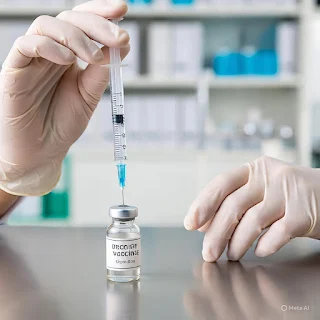A new study compares the risks and benefits of using GLP-1 medications. Iuliia Burmistrova/Getty Images
The use of glucagon-like peptide-1 receptor agonists (GLP-1 agonists) for weight loss has been greatly increasing.
Past studies show there are positive and negative side effects from GLP-1 medications.
A new study reports that GLP-1 medications may provide benefits to cognitive and behavioral health, including lowered addiction risk.
Scientists also confirmed that the use of these medications may increase a person’s risk of pancreatitis and gastrointestinal problems, as well as kidney issues.
As recent studies show the amount of people taking glucagon-like peptide-1 receptor agonists (GLP-1 agonists) for weight loss, and not for managing type 2 diabetes as originally used, researchers have been examining these medications for potential positive and negative side effects.
Examples of GLP-1 medications include Ozempic, Wegovy, Mounjaro, and Zepbound.
For example, a study published in October 2023 found that the use of GLP-1 drugs for weight loss was associated with an increased risk for pancreatitis, gastroparesis, and bowel obstruction.
On the flip side, recent studies show that GLP-1 medications may decrease a person’s risk for cardiovascular disease and dementia.
Now, a new study recently published in the journal Nature Medicine reports that taking GLP-1 medications may provide benefits to cognitive and behavioral health, including lowered dementia and addiction risks.
Scientists also confirmed that the use of these medications may increase a person’s risk of pancreatitis and gastrointestinal problems, as well as kidney issues.
GLP-1 vs. traditional diabetes drug users
For this study, researchers analyzed medical records from more than 2 million people taking diabetes medications, including over 215,000 who took GLP-1 medications, from October 2017 through December 2023 via a database maintained by the U.S. Department of Veterans Affairs.
Scientists compared 175 different health outcomes between those who took GLP-1 drugs to those who took traditional diabetes medications such as Jardiance.
“We saw skyrocketing utilization of GLP-1s, and we saw a few reports investigating one outcome or another,” Ziyad Al-Aly, MD, clinical epidemiologist, Washington University in St. Louis, chief of research at the VA St. Louis Health Care System, and senior author of this study told Medical News Today. “We realized that no one had comprehensively investigated (the) effectiveness and risks of GLP-1RA across all possible health outcomes. So we decided to do this comprehensive study looking at all 175 possible health outcomes, leaving no stone unturned.”
“GLP1s represent a new landscape; we simply wanted to comprehensively understand this new landscape. We wanted to build an atlas mapping the associations with all health outcomes,” Al-Aly said.
Lower risk of substance addiction, neurocognitive diseases
Upon analysis, researchers found that participants who took GLP-1 medications experienced significant neurological and behavioral health benefits, including a reduced risk of substance addiction to alcohol, cannabis, opioids, and stimulants, compared to those taking traditional diabetes medications.
Those using GLP-1 medications also had a reduced risk of seizures, suicidal ideation, self-harm, bulimia, and psychotic disorders such as schizophrenia.
Additionally, Al-Aly and his team reconfirmed a potential dementia-protecting benefit when they found participants taking GLP-1 drugs had a decreased risk of neurocognitive conditions such as dementia and Alzheimer’s disease.
“GLP-1 reduces neuroinflammation and also affects centers in the brain that are responsible for impulse control and reward signaling — there are many studies showing that we indeed have GLP-1 receptors in our brain. These are likely mechanisms by which GLP-1 may impact neuropsychiatric conditions.”
— Ziyad Al-Aly, MD
“I think there is clearly (an) added benefit for several conditions. For example, a person with obesity who also wants to quit smoking — getting GLP-1 may help that person hit two birds (with) one stone — simultaneously addressing obesity and also help them quit smoking. Clearly, the added benefits are welcome news,” he explained.
Increased risk of stomach problems, arthritis, kidney stones
On the reverse side, researchers found GLP-1 use was associated with an increased risk of gastrointestinal problems, including nausea, vomiting, diarrhea, and, in rare cases, paralysis of the stomach.
Scientists also found a link between GLP-1 use and an increased risk of arthritic disorders, pancreatitis, sleep disturbances, hypotension, and nephrolithiasis, normally known as kidney stones.
“We think this is important — people taking GLP-1s and doctors prescribing them should be on the lookout for these side effects. Some can be quite serious and land people in the hospital,” Al-Aly said.
Benefits beyond weight loss
MNT had the opportunity to speak with Babak Firoozi, MD, a board certified gastroenterologist at MemorialCare Orange Coast Medical Center in Fountain Valley, CA, about this study.
“I was surprised and encouraged about all the positive impact the medication has on patients, specifically in reducing risk of cognitive decline. It is becoming clear that the benefits of these medications go beyond weight loss and diabetes control. And, of course, safety is important as more and more indications to use this group of medications arise. The negative effects seem minimal.”
— Babak Firoozi, MD
MNT also spoke with Seth Kipnis, MD, FACS, FASMBS, medical director of Bariatric and Robotic Surgery at Hackensack Meridian Jersey Shore University Medical Center in New Jersey, about this research.
“This study confirms what we are seeing clinically. People with real weight loss are happier overall. They feel empowered that they can finally control their weight. Decreased obesity has long been linked with less inflammation in every body system. GI problems and renal problems will always be seen if people are not eating correctly and maintaining hydration. If you take these medications without nutritional education, they can be harmful,” Kipnis said.
“These drugs will only become more common and will increase in use. They are very effective at causing weight loss and improving health. We have been prescribing many long-term drugs for hypertension, heart disease, high cholesterol, diabetes, arthritis, reflux, and many other diseases without hesitation. People are on all of these other drugs for years. This new class of drug, as it lowers obesity, has the potential to lower the use of every other drug that is used to treat obesity-related conditions,” he added.

















